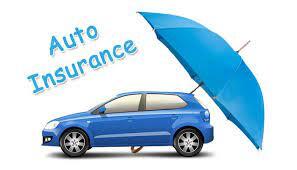Auto Insurance: Essential Guide to Choosing the Right Coverage
Auto insurance is a crucial financial tool for vehicle owners, providing protection against potential losses from accidents, theft, and other unexpected events. Choosing the right policy can lead to significant savings and peace of mind, ensuring coverage that meets individual needs. With various options available, understanding the features and benefits of different types of auto insurance can help drivers make informed decisions.
Navigating the complexities of auto insurance can be daunting, but knowledge is key. By exploring different providers, comparing quotes, and recognizing the impact of factors like driving history and location, individuals can find a policy that fits their budget and circumstances. Engaging with resources dedicated to auto insurance allows for a clearer understanding of what coverage levels and discounts might be available.
As drivers seek to protect themselves and their assets, they must stay informed about the evolving landscape of auto insurance. This article will provide insights into essential factors to consider, tips for saving money, and how to select the best coverage for personal requirements.
Understanding Auto Insurance Coverage
Auto insurance coverage consists of various types of protection designed to shield drivers from financial losses. By understanding these types, they can make informed decisions about their policies and coverage levels.
Liability Coverage
Liability coverage is essential for every driver. It covers the costs associated with damages or injuries caused to others in an accident for which the policyholder is at fault.
Most states require a minimum amount of liability coverage, which typically includes bodily injury and property damage limits. For example, a policy may feature a limit of 15/30/5, meaning $15,000 for injury per person, $30,000 total per accident, and $5,000 for property damage.
Opting for higher coverage limits can provide peace of mind and financial security, especially in severe accidents. It’s crucial to regularly review and adjust liability limits to ensure adequate protection.
Comprehensive and Collision Coverage
Comprehensive and collision coverage protects against different types of damage to a vehicle. Collision coverage pays for repairs due to accidents involving other vehicles or objects.
On the other hand, comprehensive coverage addresses damages from non-collision incidents, such as theft, vandalism, or natural disasters. Examples include broken windshields or damage from a tree falling on the car.
Having both types of coverage can significantly reduce out-of-pocket expenses for repairs. Drivers should assess their risks and vehicle value when determining the necessity of these coverages.
Uninsured and Underinsured Motorist Coverage
Uninsured and underinsured motorist coverage is vital for enhancing protection in case of accidents involving drivers lacking sufficient insurance. This coverage provides financial support if involved in an accident with an uninsured driver or one whose insurance does not cover the full extent of the damages.
Typically, it includes two main components: coverage for bodily injuries and property damage. It helps cover medical bills and property repairs when the at-fault driver cannot pay.
Given the increasing number of uninsured drivers, this coverage is a smart addition to any policy for individuals looking to safeguard their interests.
Personal Injury Protection (PIP) and Medical Payments
Personal Injury Protection (PIP) and Medical Payments coverage focus on medical expenses resulting from auto accidents. PIP covers medical costs for the policyholder and passengers, regardless of who is at fault. This includes hospital bills, rehabilitation, and lost wages due to injuries.
Medical Payments coverage, while similar, typically covers only medical expenses and doesn’t account for lost wages. Both types can be beneficial in alleviating the financial burden of unexpected medical costs after an accident.
Drivers should evaluate their healthcare insurance and financial situation to decide how much PIP and medical payment coverage is appropriate.
Also Read :
